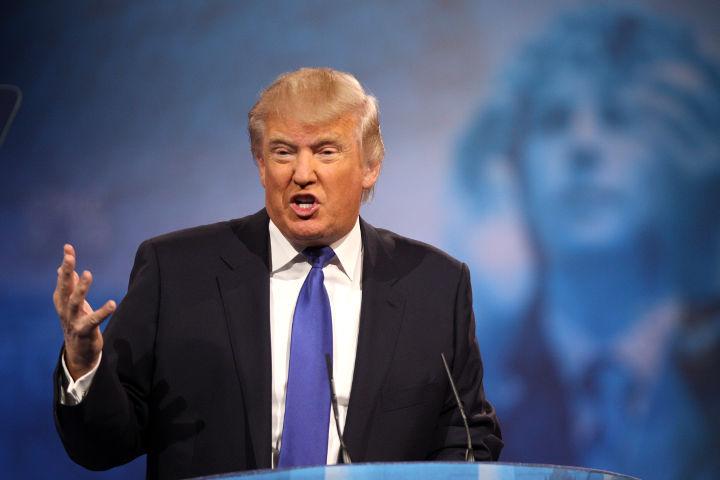Immigration has been a major focus in the 2016 presidential election, and knowing how some of the major candidates feel about major immigration issues is important. One such issue is the candidate’s stance on H-1B Visas. H-1B Visas are designed for employers to be able to recruit and employ foreign born professionals in certain occupations within the United States. H-1B Visas are a hot button issue for technology-oriented sectors.
Current H-1B Visa Status
H-1B Visas are non-immigrant visas. That means that the foreign born professional is only allowed to stay in the United States for a certain period of time. The foreign born professional can also bring their spouse and their children if his or her children are under 21 years of age. The foreign born professional must have a certain level of education or experience to qualify for this type of Visa.
The employer is actually the one to apply for the H-1B Visa. The application process requires that the foreign born professional be paid a wage that is comparable to the work being performed. This forces employers to pay a wage that would be similar to an American worker—there should be no significant undercutting of wages because the foreign born professional is not a United States citizen. The employer must also show that employing this person would not adversely affect a similarly employed individual in the United States.
A foreign born professional who is living and working in the United States on an H-1B Visa can apply for citizenship as well. The employer may also sponsor the employee to apply for his or her green card. The United States only allows a certain number of H-1B Visas each year, but there are talks of increasing this number.
Increasing the Cap on H-1B Visas
Large technology companies are pushing hard to increase the cap on the number of H-1B Visa holders that are available for employment at their companies. Skilled technology oriented positions are difficult to fill and companies like Facebook and Microsoft have been using H-1B Visas to provide for some of their hard-to-fill positions.
These Visas are particularly important considering the fact that science, technology, and math (STEM sectors) positions are projected to increase by 17 percent by 2018—which is much higher than the 9.8 percent projected for other sectors. As of 2012, the most recent data available from the U.S. Census Bureau, the unemployment rate for those in the STEM sector was 3 percent. The overall unemployment rate at the same time was 8 percent.
New legislation was introduced in January of 2015 that would increase the number of H-1B Visas from 65,000 to between 115,000 and 195,000. This bill is known as the I-Squared Act of 2015. It would also allow spouses to accompany their H-1B Visa holder, with a work permit. In addition, renewing the Visa might be easier under this bill as well.
Donald Trump’s Stance on H-1B Visas
Donald Trump, currently one of the leading presidential Republican candidates, is very critical of increasing the number of H-1B Visas available. He argues that this increase would mean less jobs for American workers, particularly women and minorities. Under Trump’s stance, he would force technology companies to increase the amount paid for acquiring an H-1B worker. This increase would discourage hiring and give more of these jobs to American workers. He argues that these jobs should be offered to unemployed Americans first, before consideration of a H-1B Visa occurs at all.
H-1B Visa holders are supposed to offer the foreign worker a comparable wage to what would be offered to a worker who is a citizen of the United States. In reality, however, these Visa holders are often paid 20 to 45 percent less than a United States worker. Trump’s argument, then, is that large technology companies should not be using the H-1B Visa program to get cheaper labor.
Trump’s stance on H-1B Visas is in direct opposition to Marco Rubio’s support for the I-Squared Act. Rubio would increase the number of H-1B Visas, but would impose a waiting period that would force the employer to post the job for a certain number of days in the United States before allowing someone to fill the position using an H-1B Visa.
Trump’s Other Immigration Policy Positions
Trump’s policies on other immigration issues are pretty straight-forward. For example, he wants to physically build a wall between Mexico and the United States, and force Mexico to pay for the construction. Trump argues that Mexico has been taking advantage of a hospitable United States to the detriment of the economy and the average American citizen. He also argues that illegal immigrants increase crime throughout the United States, which is not only a problem for the public at large, but overburdens the police force and prison system as well. It is apparent that Trump’s arguments for immigration reform reach far beyond reform for the H-1B Visa.
Sources:
- http://money.cnn.com/2015/08/17/news/companies/donald-trump-mark-zuckerberg-immigration/”>http://money.cnn.com/2015/08/17/news/companies/donald-trump-mark-zuckerberg-immigration
- https://www.congress.gov/bill/114th-congress/senate-bill/153″>https://www.congress.gov/bill/114th-congress/senate-bill/153
- http://www.usnews.com/news/articles/2015/10/29/trump-rubio-miss-the-mark-on-h1-b-visas”>http://www.usnews.com/news/articles/2015/10/29/trump-rubio-miss-the-mark-on-h1-b-visas
- http://dcinno.streetwise.co/2015/10/29/h1b-gop-debate-trump-rubio-tech-immigration-policy/”>http://dcinno.streetwise.co/2015/10/29/h1b-gop-debate-trump-rubio-tech-immigration-policy/
- https://www.donaldjtrump.com/positions/immigration-reform”>https://www.donaldjtrump.com/positions/immigration-reform
- Image by Gage Skidmore
Beeraj Patel, Esq.
Latest posts by Beeraj Patel, Esq. (see all)
- How Immigration Attorneys Fight for Your Rights - July 15, 2024
- Why Green Cards Expire and How to Renew Them - July 1, 2024
- How PERM Labor Certification Opens Doors to Permanent Residency - June 24, 2024
